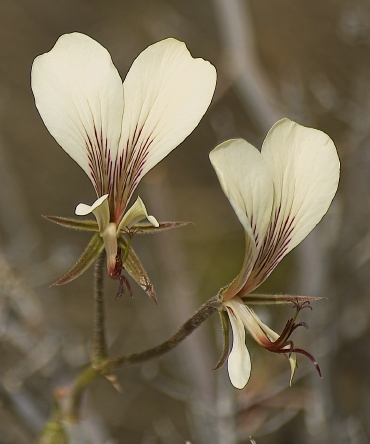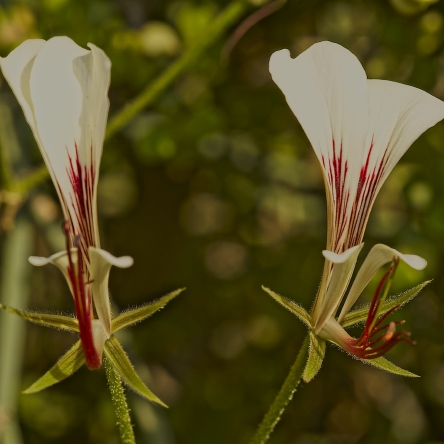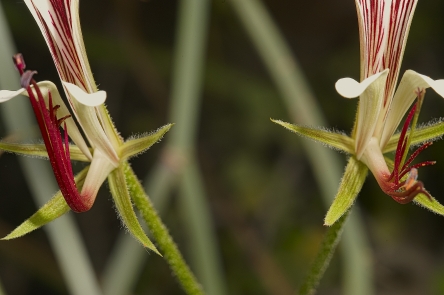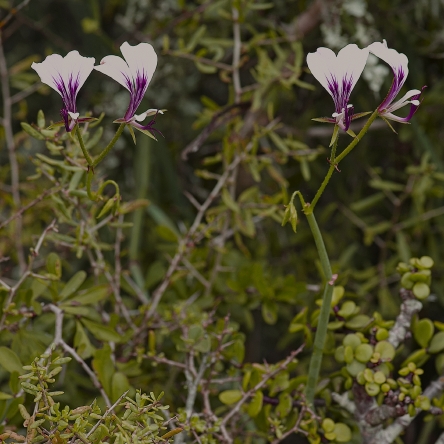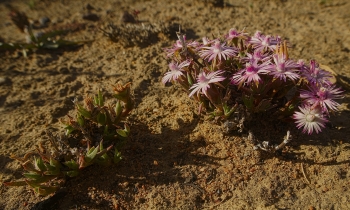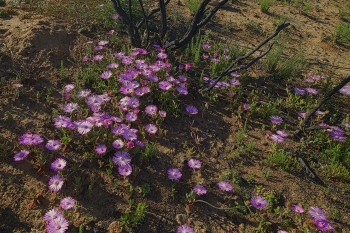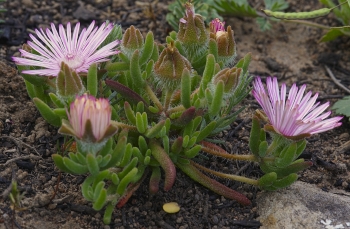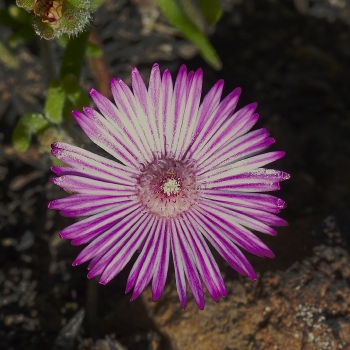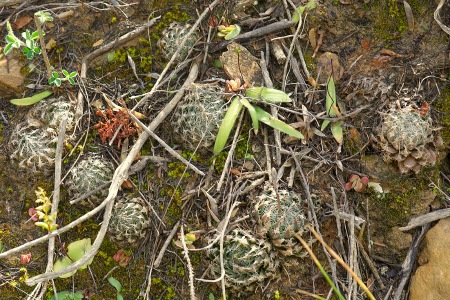The editor of “Veld & Flora” ( http://www.botanicalsociety.org.za/) invited me to write an article on succulents for the magazine. It is now ready and will be published in the March issue.
The article is called “Miniature succulents – masters of survival” and highlights some of the intriguing adaptations miniature succulents deploy in order to survive. The following snippet will give you some idea of what to expect.
A peculiar adaptation is shown by many members of the mesemb family (Aizoaceae), especially the dwarf ones, which are able to recycle water from old leaves to new ones.
As the soil dries out towards the end of the growing period, the older leaves are gradually sacrificed and their water content is translocated to and stored in the younger ones. In this way, all available water reserves are concentrated in the last pair of leaves.
In the end, the dry remnants of the old leaves form a papery sheath acting as a protective layer of insulation for the new ones. When the next rainy period starts, the new pair reaches its final size and bursts through the old skin, ready for action.
It has been found that this adaptation enables plants to survive for about a year without any moisture supply from outside.



These three pictures of Antimima pygmaea were taken near Matjiesfontein in winter (mid August), spring (early October) and summer (end of January) respectively. At first, it would be hard to believe that it is all one species.
